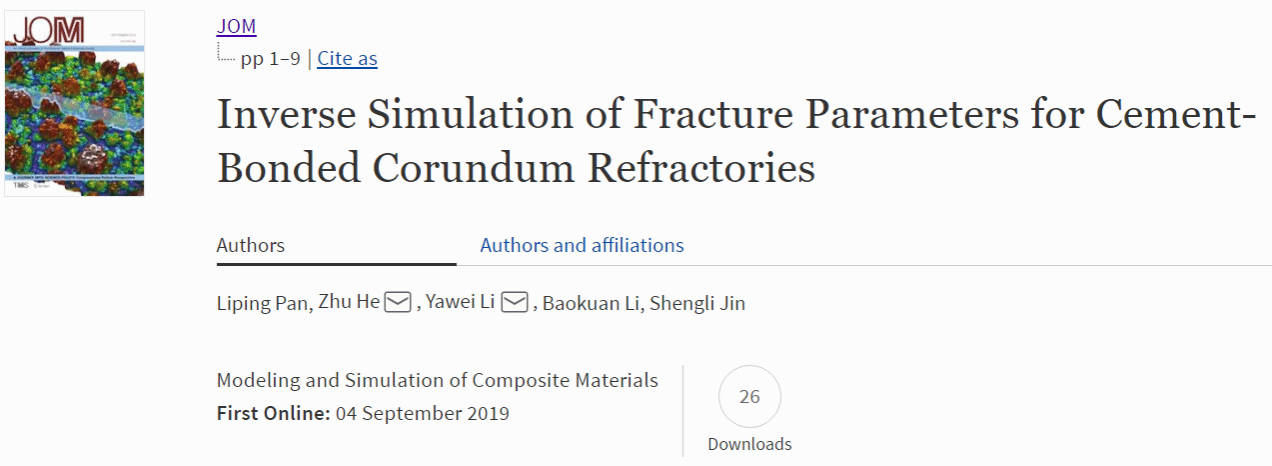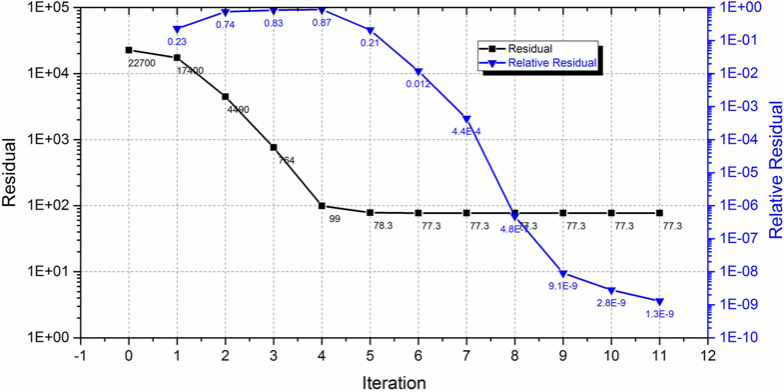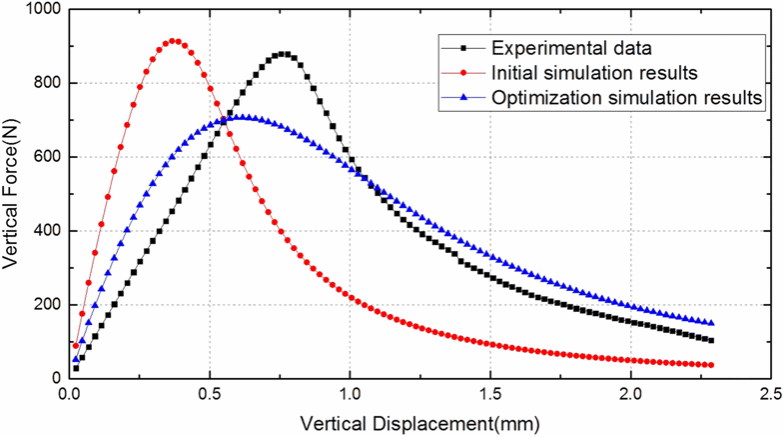The research paper “Inverse Simulation of Fracture Parameters for Cement-Bonded Corundum Refractories” of our team was published in the Journal of the Minerals Metals & Materials society (JOM for short).

The first unit of this paper is State Key Laboratory of Refractory Materials and Metallurgy of Wuhan University of Science and Technology (WUST for shor), the second unit is National-provincial Joint Engineering Research Center of High Temperature Materials and Lining Technology (the center for short) of WUST, the third unit is Leoben Mining University, Austria. Prof. Li Yawei and He Zhu are corresponding authors of this paper, Dr. Pan Liping is the first author, and Prof. Li Kuanbao and Jin Shengli are co-authors.

Exponential CZM model residual and relative residual iteration graph

Bilinear CZM model residual and relative residual iteration graph

Force displacement curve of exponential CZM model

Experiment and simulation comparison diagram of force-displacement curve
In order to obtain the real solution of the fracture parameters for the wedge-splitting test, numerical simulation and inverse algorithm have been designed to estimate the maximum tensile stress and fracture energy of cement-bonded corundum refractory. The experimental and simulated curves have been systematically compared to produce the bilinear model of cohesive zone material with the inverse algorithm of nonlinear least-squares solution being the most suitable for the simulation of the wedge-splitting test. Furthermore, the inverse simulation procedure has been applied to specimens of various heating temperatures and cement contents. Consequently, the fracture energy and the maximum tensile stress initially decrease and then increase with the temperature. Furthermore, the fracture energy has the tendency of increasing with the cement content, and the maximum tensile stress has the highest peak at the content of 10 wt.%. Additionally, the cement-bonded corundum refractory presents higher brittleness after high-temperature heating (1400ºC) or with the cement content of 10 wt.% at 110ºC.
Paper Link: http://link.springer.com.wust.dr2am.cn/article/10.1007/s11837-019-03750-y
Paper:  Inverse Simulation of Fracture Parameters for Cement-Bonded Corundum Refractories.pdf
Inverse Simulation of Fracture Parameters for Cement-Bonded Corundum Refractories.pdf
